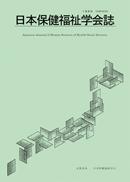Volume 6, Issue 1
Displaying 1-6 of 6 articles from this issue
- |<
- <
- 1
- >
- >|
-
Article type: Article
1999Volume 6Issue 1 Pages 1-2
Published: October 31, 1999
Released on J-STAGE: September 15, 2017
Download PDF (188K) -
Article type: Article
1999Volume 6Issue 1 Pages 3-13
Published: October 31, 1999
Released on J-STAGE: September 15, 2017
Download PDF (1169K) -
Article type: Article
1999Volume 6Issue 1 Pages 15-21
Published: October 31, 1999
Released on J-STAGE: September 15, 2017
Download PDF (774K) -
Article type: Article
1999Volume 6Issue 1 Pages 23-30
Published: October 31, 1999
Released on J-STAGE: September 15, 2017
Download PDF (847K) -
Article type: Article
1999Volume 6Issue 1 Pages 31-38
Published: October 31, 1999
Released on J-STAGE: September 15, 2017
Download PDF (749K) -
Article type: Article
1999Volume 6Issue 1 Pages 39-47
Published: October 31, 1999
Released on J-STAGE: September 15, 2017
Download PDF (961K)
- |<
- <
- 1
- >
- >|
